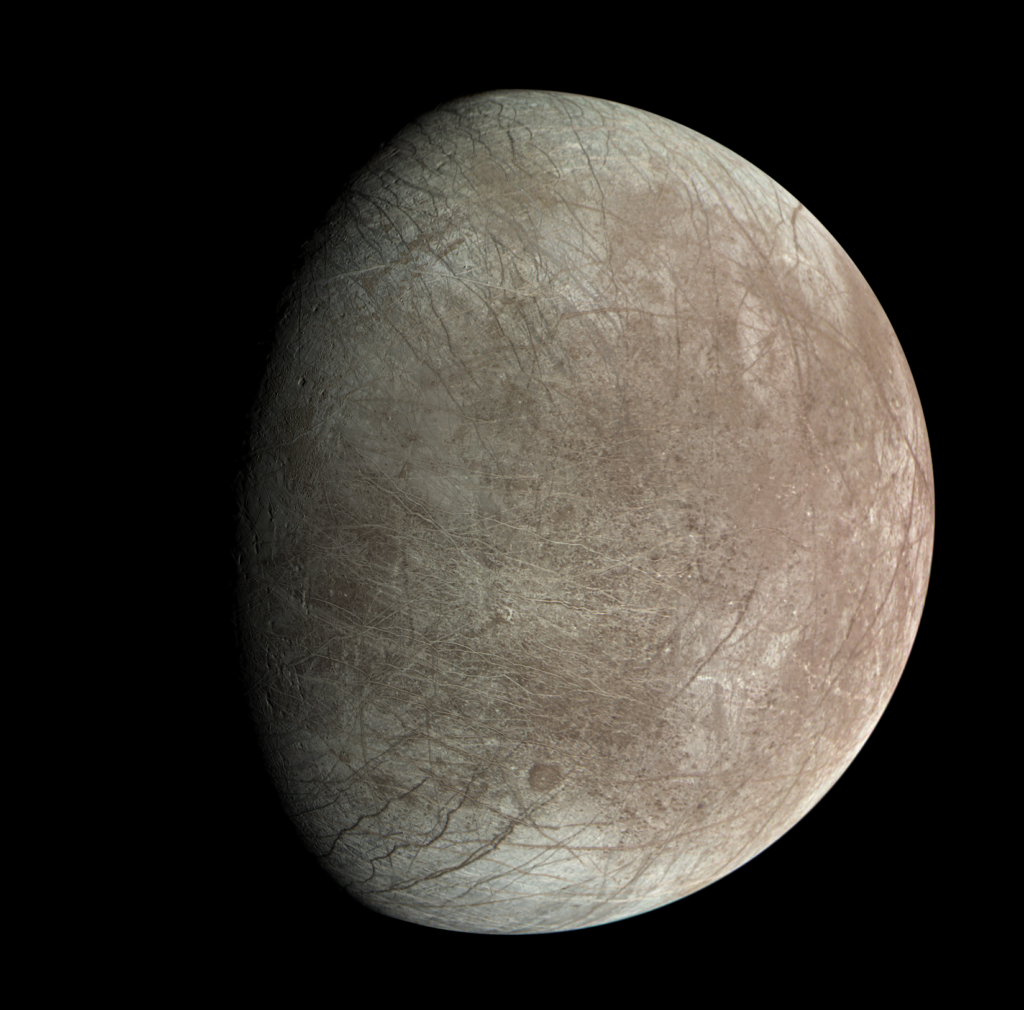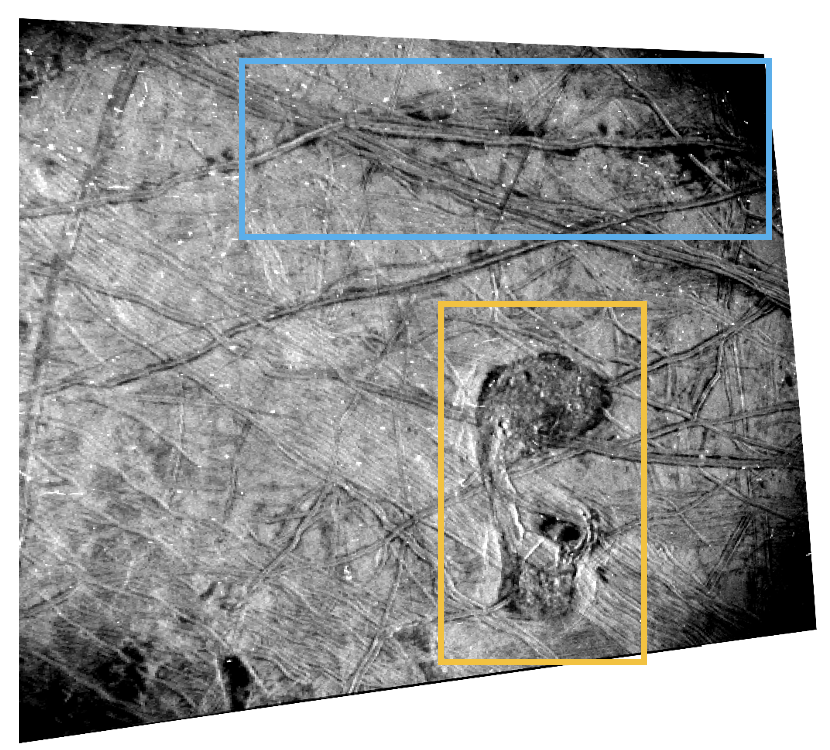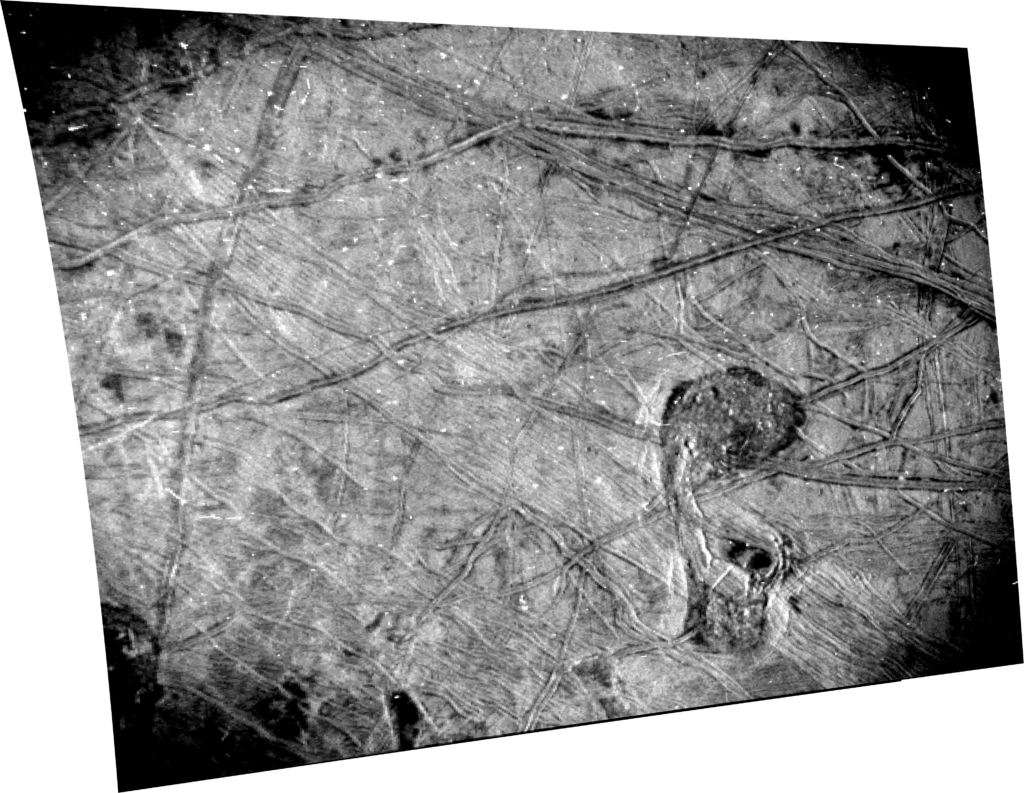After studying the images taken by the Juno probe, NASA researchers have discovered a number of intriguing features on the Europa moon. They indicate that this icy world is more active than previously thought.
False Crater
On September 29, 2022, the Juno probe made a close flyby of Europa, passing at a distance of only 355 km from it. This made it possible to take the first high-resolution moon surface images since the Galileo mission (2000).

By analyzing images of the equatorial regions, along with the expected ice blocks, walls, ridges and depressions, the researchers also found unevenly distributed steep-walled depressions with a width of 20 to 50 km. They resemble large egg-shaped pits previously recorded in photographs of other parts of Europa.
According to popular belief, there is a giant ocean hiding under the surface of Europa. At the same time, the icy shell of the moon is in no way connected with the rocky bottom. In fact, it remains free-floating and moving. This leads to high stress levels and creates characteristic faults like those that Juno was able to photograph in the Southern Hemisphere.
JunoCam photos were also used to reclassify the facility. We are talking about what was previously considered the 21-kilometer Gwern Crater. The images showed that in reality this formation is a set of intersecting ridges, creating an oval shadow, mistaken for a funnel.
Platypus on Europa
But, although Juno removed one object from the map of Europa, at the same time it managed to capture another, very intriguing formation. Due to its shape, it was nicknamed the “platypus”.

The dimensions of the “platypus” are 37 km by 67 km. It is characterized by a chaotic relief with hummocks, ridges and dark reddish-brown material and is the youngest object in this region. Its northern and southern parts, connected by a “neck”, interrupt the surrounding relief with a bumpy matrix material containing numerous ice blocks from 1 to 7 km wide. At the edges of the “platypus” ridge formations break off to the surface.
The Juno team believes that these formations confirm the idea that Europa’s ice shell may bend in places where karman with salt water from the subsurface ocean are located below the surface. About 50 km north of the “platypus” is a series of double ridges, flanked by dark spots similar to those found elsewhere in Europa. They may be associated with cryovolcanoes.

In general, Juno’s findings suggest that Europa is more active than previously thought and confirm the theory of an ocean hidden under its surface. They will be used in planning the Europa Clipper mission, which should explore this unusual world in detail. Its launch is scheduled for autumn 2024.
According to https://www.jpl.nasa.gov
Follow us on Twitter to get the most interesting space news in time
https://twitter.com/ust_magazine


